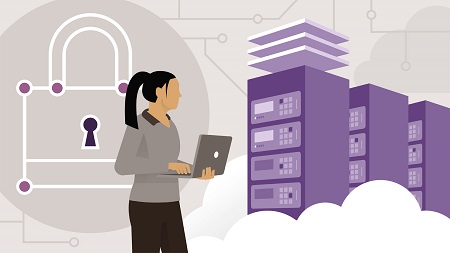
English | MP4 | AVC 1280×720 | AAC 44KHz 2ch | 2 Hours | 273 MB
Network security is an important component of the Microsoft Technology Associate (MTA), Security Fundamentals exam (98-367). In this course, Lisa Bock covers one of the main topics of the exam: securing an organization’s network, to keep interconnected systems and data safe. The course introduces security devices such as firewalls and honeypots. In addition, she reviews the importance of isolating networks with VLANS and NAT addressing, along with a review of common security protocols. She also provides overviews of how to protect clients with antivirus software, encrypt folders and files, and implement software restriction policies. Finally, she looks at the often-overlooked topic of physical security, which includes securing a building’s perimeter and the hardware within.
Topics include:
- Describe ways a security baseline can ensure that all device configuration settings are in line with the organization’s baseline metric.
- Examine methods for ensuring physical security.
- Examine the three levels for software-restriction policies.
- Explore how VLANS can protect the network.
- Identify the different ways malicious actors can spoof protocols on the network.
- List common devices that are used to protect and defend a network.
- Recognize how antivirus software protects your system against malware.
- Recognize how server and domain isolation can isolate and protect subnetworks.
- Recognize the threat of password attacks.
- Recognize the various ways to use and secure protocols, in order to minimize risk and prevent attacks.
Table of Contents
Introduction
1 Securing the network
2 Prepare for MTA exam 98-367
Security Devices
3 Reviewing firewalls
4 Luring with honeypots
5 Keeping the OS and software updated
6 Assessing security baselines
Network Isolation
7 Segmenting using routers and VLANS
8 Creating server and domain isolation
9 Securing the perimeter network
10 Translating the network address
Avoiding Attacks
11 Comparing attack methods
12 Attacking passwords
13 Sniffing the network
14 Spoofing protocols
15 Poison the ARP cache
16 Challenge Password strength
17 Solution Password strength
Using Secure Protocols
18 Securing DNS
19 Securing Internet Protocol
20 Protecting DHCP
Client Protection
21 Using antivirus
22 User Account Control (UAC)
23 Encrypting folders and files
24 Setting software restriction policies
25 Using the principle of least privilege
26 Encrypting data in transit
Physical Security
27 Protecting buildings
28 Securing hardware
29 Controlling access
30 Challenge Physical security requirements
31 Solution Physical security requirements
Conclusion
32 Whats next
Resolve the captcha to access the links!